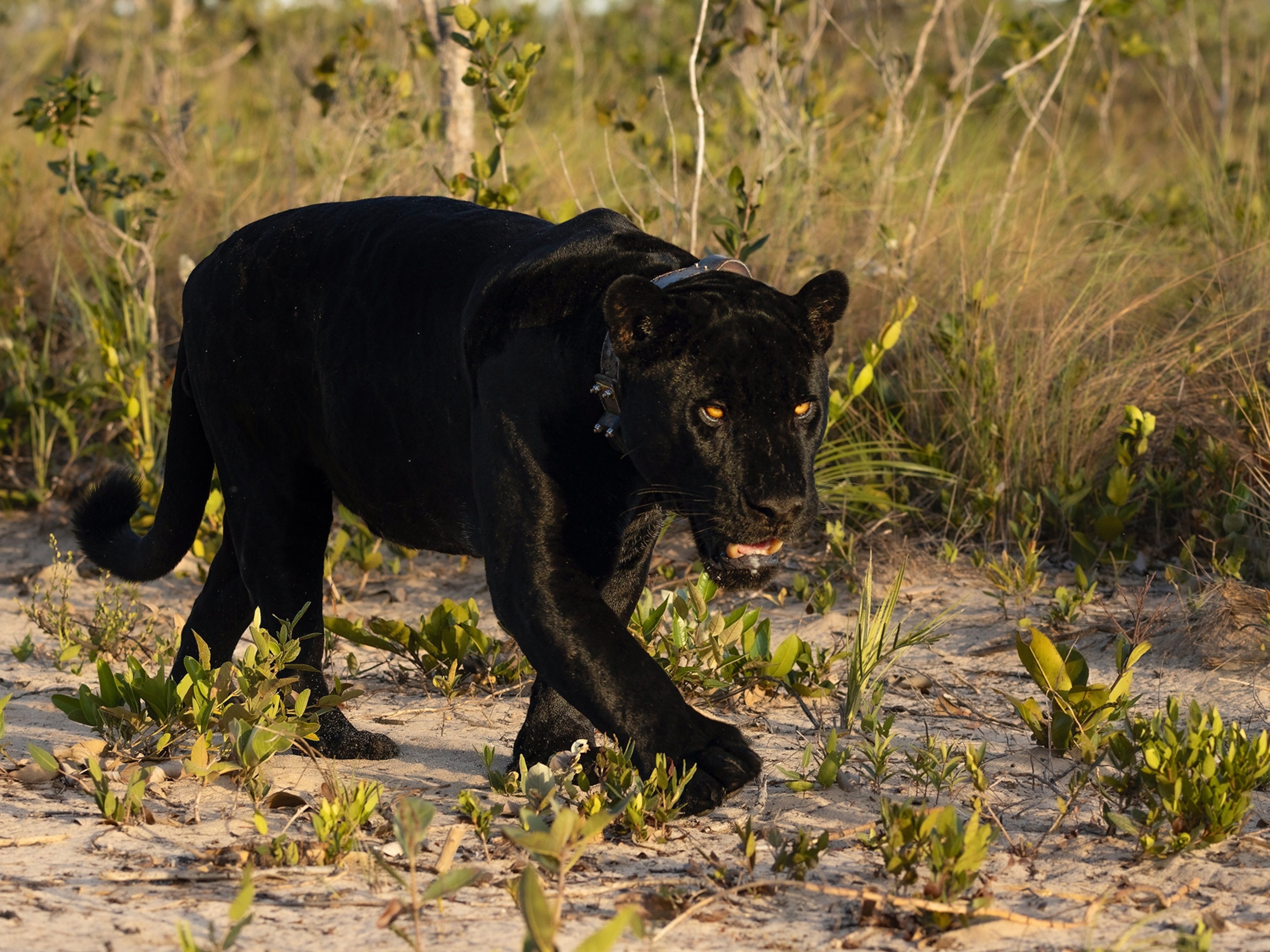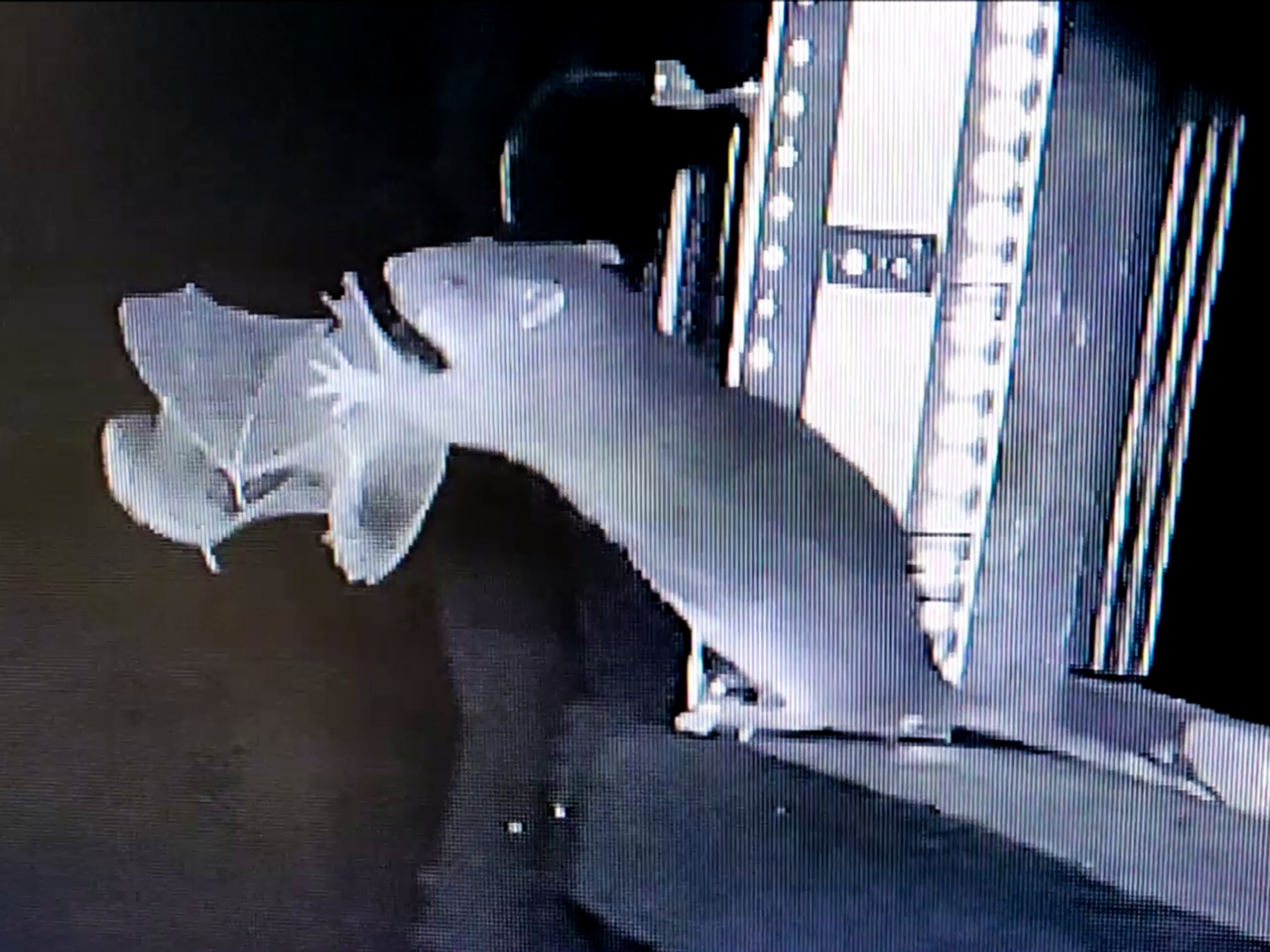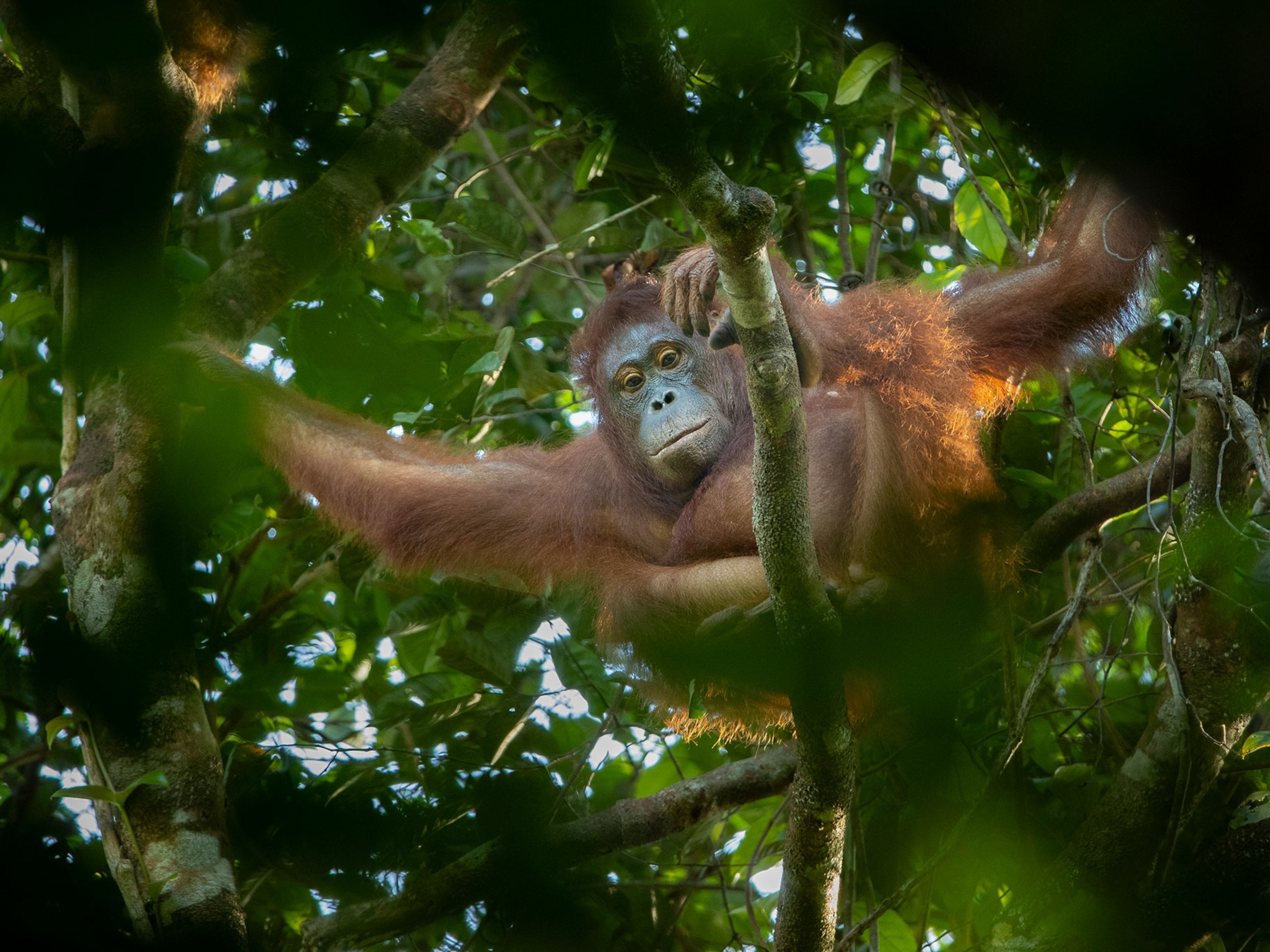
New Jaguar Frog Discovered on Abandoned Highway
The spotted amphibian may already be at risk of extinction, a new study says.
Scientists have discovered a new species of tree frog in an unusual place—a stretch of abandoned highway in Brazil.
When herpetologists first heard male frogs calling in the Amazon rain forest, they suspected the unknown sound came from a species completely new to science. Rafael de Fraga, a herpetologist at the National Institute of Research of the Amazon, and colleagues later confirmed it via genetic analysis.
The team named the species Scinax onca, or the jaguar snouted tree frog, due to its spotted skin and the prevalence of big cats they found in the area.
"During the sampling expeditions we were also lucky enough to spot several jaguars," says de Fraga, who noted the sightings unnerved some of his team.
But, he noted, "the highway is definitely more dangerous than jaguars [because] many people have died there by car crash or fallen bridges."
The newfound frog is the 27th species of Scinax—the snouted genus of tree frogs—known from the Amazon Basin. There are more than 800 species of tree frogs worldwide. (Read about three warty toad species found in Brazil.)
The confluence of the Purus and Madeira Rivers where the frog lives is "very special from a biological point of view," de Fraga says. That's because it is home to a diverse array of species, including the closely related Scinax iquitorum tree frog.
A Fleeting Find?
So far, not much is known about the newly identified creature, described in a recent study in the journal Zookeys.
The orange-eyed frog measures less than two inches and has a white groin with black spots. It's also sexually dimorphic, meaning female frogs are larger than males.
De Fraga says the amphibian's scratchy call sounds like a woodsaw, and the male's mating trill lasts a little over 100 milliseconds. (See more tree frog pictures.)
"[The discovery is] not a huge surprise, but it's indicative of kind of a push within Brazil to understand the environment," says Darrel Frost, curator emeritus at the American Museum of Natural History, who wasn't involved in the study.
Although about one new species discovered in the Amazon every other day, species are dying out before they're even identified. Amphibians in particular are disappearing at alarming rates, due to factors such as the deadly chytrid fungus and deforestation.
De Fraga suspects the frog is endangered, and is further imperiled by plans to recover the derelict highway, which will likely lead to habitat destruction for several species.
"We are not totally opposed to the highway recovering, because many local people live completely isolated from basic resources such as hospitals," de Fraga says.
"But it is rather disturbing to watch the region being converted into urban areas without any concern for the biodiversity that is being lost."




